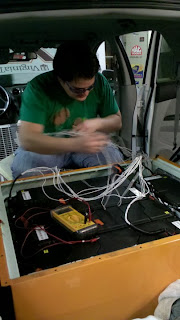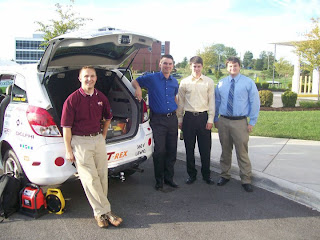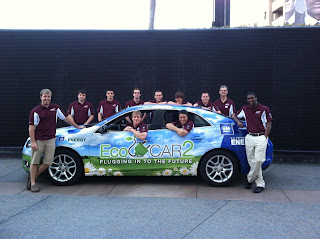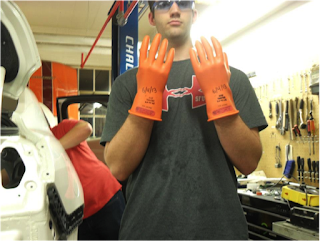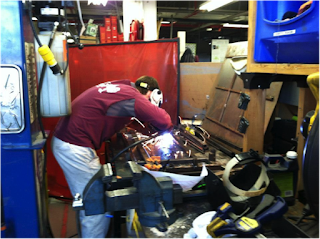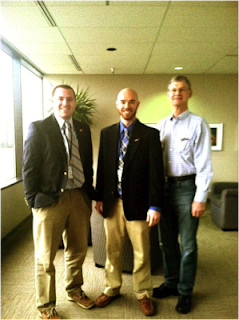I repeat: Mary is mobile!
We were able to find an issue with our rear traction motor inverter and have it sent off to UQM for repairs. After getting our inverter back we were able to re-integrate it into our vehicle to use our high voltage system to run the rear traction motor. Being up-and-running again in EV mode is a huge step in the right direction. We'll now be able to do some vehicle testing and collect a lot more data. We'll be using this data to refine our control code and increase EV efficiency.
Where do we go from here? I'm glad you asked!
Our next major milestone is to get our front powertrain working. As discussed in an earlier post, we have been troubleshooting a fluid leak with our P2 generator motor. We have since narrowed down a few options and are collaborating with headlining sponsor GM to see which stock components may be conflicting with our system.
Next step is to validate our engine controls outside the vehicle using an engine test stand. We will first re-wire the engine on the test stand and then verify certain controls. Once we have done that, we can add our P2 to the engine and test that. Finally, we will add our transmission to the mix and test the engine system fully.
Once we can validate our complete engine components, we should be able to re-install our engine into Mary and run our front powertrain. This will give us our as-intended final product — a running series-parallel plug-in hybrid electric vehicle!
Be sure to like us on Facebook and follow us on Twitter for day-today updates and progress.
Have any ideas or advice for vehicle testing? Let us know in the comments below!


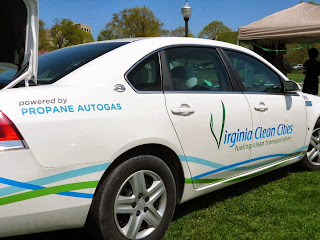



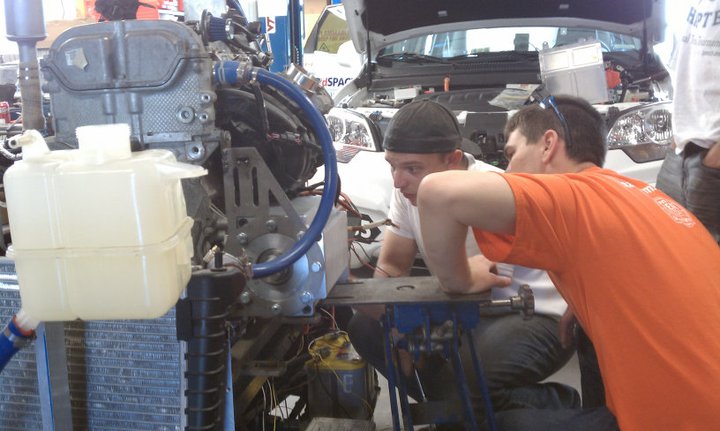
.jpg)

